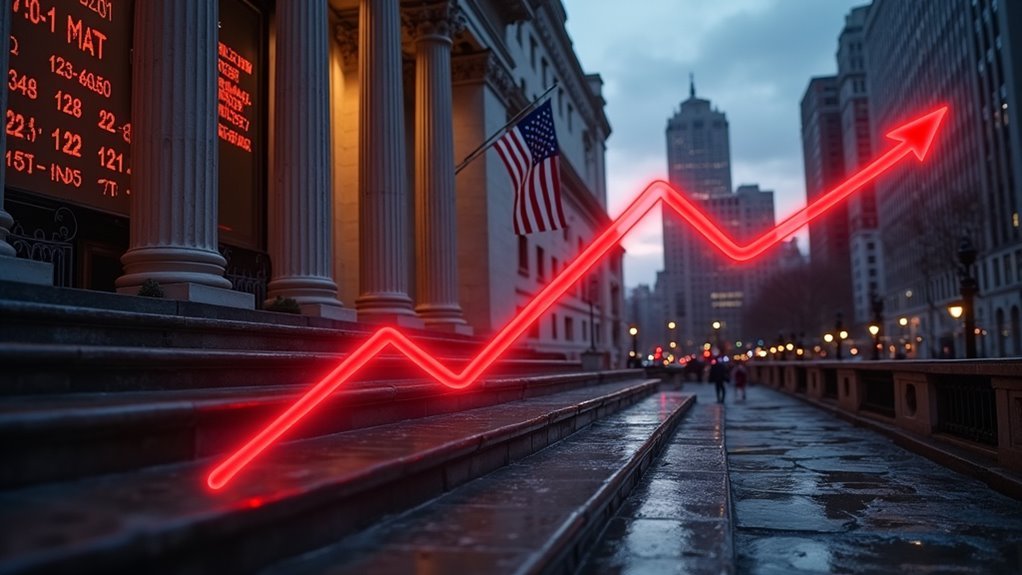Volatility strikes fear into the hearts of many investors. The mere mention of market turbulence sends some running for the exits, clutching their portfolios like precious family heirlooms. But here’s the thing – that same volatility that terrifies the masses actually represents a goldmine of opportunity for those who understand its true nature.
The numbers don’t lie. Historical data consistently shows that major market recoveries follow substantial corrections. Since 1974, there have been 27 market corrections with only six reaching bear market territory. While average investors panic-sell during downturns, savvy market participants see these moments as prime buying opportunities. It’s simple math, really. When quality stocks go on sale during volatile periods, future returns tend to be markedly higher. Investors who maintain a buy-and-hold strategy often see volatility as just temporary market noise.
Market history proves it time and again: the biggest gains come from buying quality stocks when fear drives prices down.
The VIX – Wall Street’s famous “fear gauge” – typically spikes during market turmoil. But instead of viewing these spikes as warning signs, experienced traders see them as flashing neon “opportunity” signs. Day traders particularly love these wild price swings, surfing the volatility waves for quick profits. Meanwhile, long-term investors quietly accumulate positions at discount prices. Defensive sectors like utilities and consumer staples often provide stability during these turbulent periods.
Psychology plays a massive role in market behavior during volatile periods. Most people let their emotions drive their decisions – selling when they should buy, buying when they should sell. It’s almost comical how predictable human behavior becomes during market stress. The smart money knows this and positions accordingly.
Risk management remains essential, of course. Position sizing matters more than ever in choppy markets. Smart investors keep cash reserves ready – their financial dry powder – waiting to deploy when others run scared. Stop-loss orders and proper diversification aren’t just fancy terms; they’re survival tools in the volatility game.
The historical context is crystal clear: market corrections happen regularly. They’re as natural as morning coffee. Yet every time markets drop 10%, people act like it’s the end of the financial world. Meanwhile, disciplined investors who understand volatility’s dual nature – both risk and opportunity – quietly build wealth through these cycles. Because sometimes, the best opportunities come wrapped in fear.




